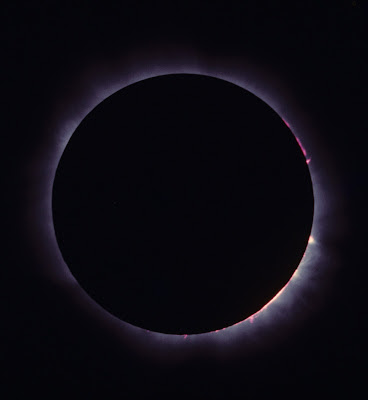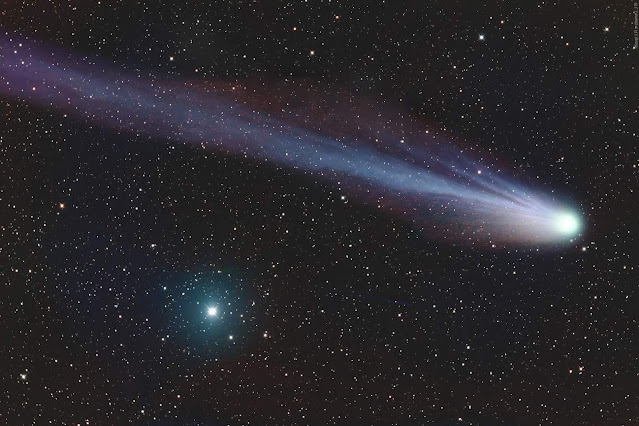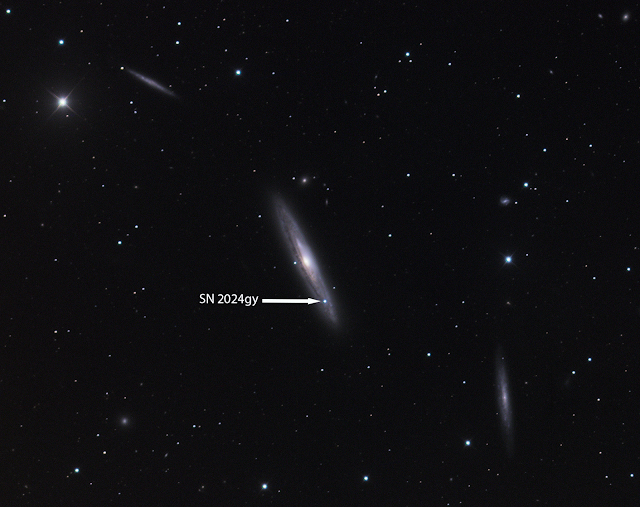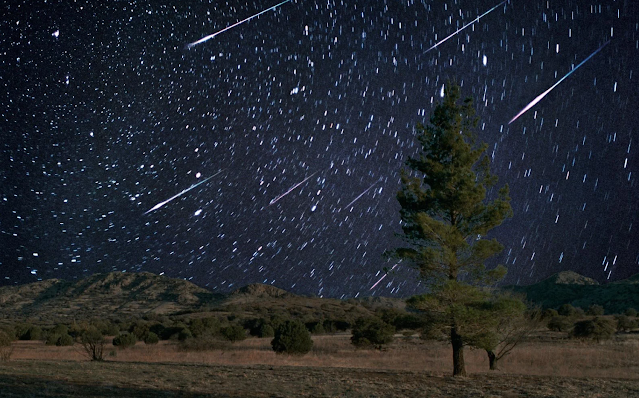What Will the Sun Look Like During Totality?
 |
| The Glow of the Solar Corona During the Totality of the February 16, 1980, Total Solar Eclipse from Kenya, Africa. All photos by Harry Hammond. |
The total solar eclipse on April 8, 2024, is set to be an awe-inspiring astronomical event that will mesmerize observers throughout North America. Several extraordinary phenomena will be unveiled when the Moon completely blocks out the Sun during the brief period of totality.
The Solar Corona: As the Moon's shadow covers the Sun, the solar corona, a radiant halo of superheated plasma, will become visible. Normally obscured by the Sun's intense brightness, the corona extends millions of kilometers into space. During totality, it will manifest as a delicate and ethereal crown encircling the obscured Sun. Its delicate tendrils, sculpted by the Sun's magnetic field, will extend outward, exposing the Sun's outer layers.
Prominences and Filaments: Watch for solar prominences, massive arches of hot gas, along the edge of the Sun. These fiery loops, held in place by magnetic forces, will be visible against the Moon's dark backdrop. Some may even erupt dramatically during the eclipse, enhancing the spectacle. Additionally, watch for solar filaments, long thread-like features stretching across the Sun's surface.
 |
| Solar Prominences During Totality. |
Baily’s Beads and the Diamond Ring: Just before and after totality, you can observe Baily’s Beads. Sunlight filtering through the rugged valleys on the lunar surface creates a series of bright beads along the Moon's edge. As the final bead disappears, the "diamond ring effect" takes place—a dazzling point of light emerges, resembling a sparkling diamond ring, signaling the beginning of totality.
Planets and Stars: During the eclipse, planets and stars will become visible in the darkened sky. Venus, Mercury, and Mars may appear near the Sun. Bright stars such as Sirius and Capella will also become prominent. Observers can also see the Moon’s shadow moving swiftly across the landscape, casting an eerie twilight and unveiling the Sun’s intricate details.
Ensure you use appropriate eye protection during the partial phases of the eclipse. When totality arrives, take a moment to appreciate this rare opportunity to witness the hidden beauty of the Sun. Whether you are in Mexico, the United States, or Canada, mark your calendars for this celestial phenomenon—it is an event you won't want to miss!








Comments
Post a Comment